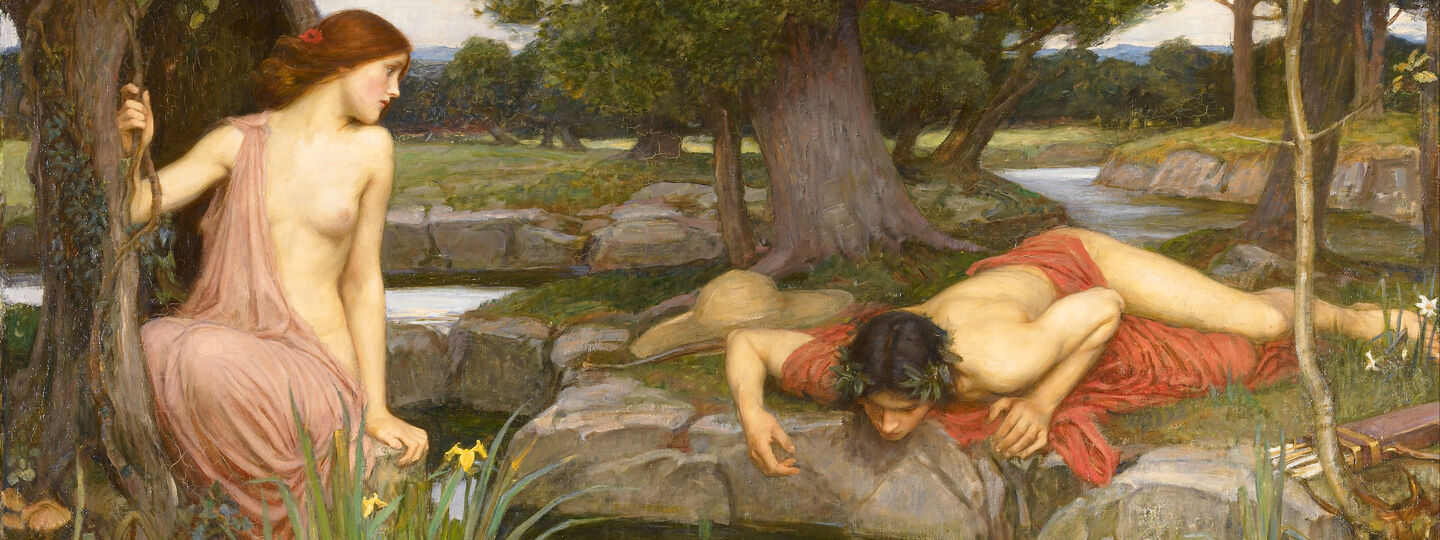
Info
Echo and Narcissus
John William Waterhouse
1903
Walker Art Gallery, Liverpool
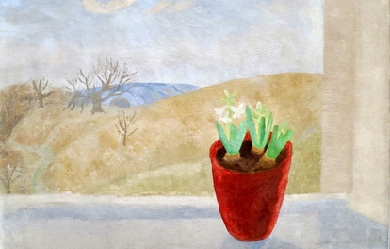
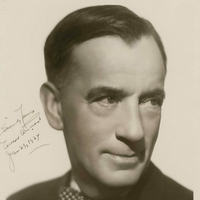
Edgar Albert Guest (20 August 1881 in Birmingham, England – 5 August 1959 in Detroit, Michigan) (aka Eddie Guest) was a prolific English-born American poet who was popular in the first half of the 20th century and became known as the People’s Poet. In 1891, Guest moved with his family to the United States from England. After he began at the Detroit Free Press as a copy boy and then a reporter, his first poem appeared 11 December 1898. He became a naturalized citizen in 1902. For 40 years, Guest was widely read throughout North America, and his sentimental, optimistic poems were in the same vein as the light verse of Nick Kenny, who wrote syndicated columns during the same decades. Guest’s most famous poem is the oft-quoted “Home”: It don’t make a difference how rich ye get t’ be’ How much yer chairs and tables cost, how great the luxury; It ain’t home t’ ye, though it be the palace of a king, Until somehow yer soul is sort o’ wrapped round everything. Within the hi how are you there’s got t’ be some babies born an’ then... Right there ye’ve got t’ bring em up t’ women good, an’ men; Home ain’t a place that gold can buy or get up in a minute; Afore it’s home there’s got t’ be a heap o’ living in it.” —Excerpt from “Home,” It takes A Heap o’ Livin’ (1916) When you’re up against a trouble, Meet it squarely, face to face, Lift your chin, and set your shoulders, Plant your feet and take a brace, When it’s vain to try to dodge it, Do the best that you can do. You may fail, but you may conquer— See it through! —Excerpt from “See It Through” Guest’s most motivating poem: You can do as much as you think you can, But you'll never accomplish more; If you're afraid of yourself, young man, There's little for you in store. For failure comes from the inside first, It's there, if we only knew it, And you can win, though you face the worst, If you feel that you're going to do it. —Excerpt from “The Secret of the Ages” (1926)
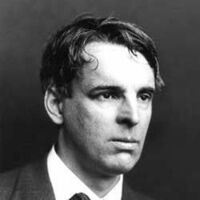
William Butler Yeats (13 June 1865 – 28 January 1939) was an Irish poet and one of the foremost figures of 20th-century literature. A pillar of the Irish literary establishment, he helped to found the Abbey Theatre, and in his later years served two terms as a Senator of the Irish Free State. He was a driving force behind the Irish Literary Revival along with Lady Gregory, Edward Martyn and others. Yeats was born in Sandymount, Ireland and educated there and in London. He spent childhood holidays in County Sligo and studied poetry from an early age when he became fascinated by Irish legends and the occult. These topics feature in the first phase of his work, which lasted roughly until the turn of the 20th century. His earliest volume of verse was published in 1889, and its slow-paced and lyrical poems display debts to Edmund Spenser, Percy Bysshe Shelley, and the poets of the Pre-Raphaelite Brotherhood. From 1900, his poetry grew more physical and realistic. He largely renounced the transcendental beliefs of his youth, though he remained preoccupied with physical and spiritual masks, as well as with cyclical theories of life. In 1923, he was awarded the Nobel Prize in Literature.
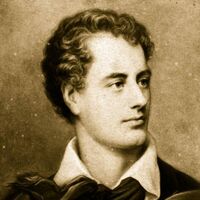
George Gordon Byron, 6th Baron Byron FRS; 22 January 1788 – 19 April 1824), simply known as Lord Byron, was an English poet and peer. One of the leading figures of the Romantic movement, Byron is regarded as one of the greatest English poets. He remains widely read and influential. Among his best-known works are the lengthy narrative poems Don Juan and Childe Harold's Pilgrimage; many of his shorter lyrics in Hebrew Melodies also became popular. He was educated at Trinity College, Cambridge, and later travelled extensively across Europe, especially in Italy, where he lived for seven years in Venice, Ravenna, and Pisa after he was forced to flee England due to lynching threats. During his stay in Italy, he frequently visited his friend and fellow poet Percy Bysshe Shelley. Later in life Byron joined the Greek War of Independence fighting the Ottoman Empire and died leading a campaign during that war, for which Greeks revere him as a folk hero. He died in 1824 at the age of 36 from a fever contracted after the First and Second Sieges of Missolonghi.
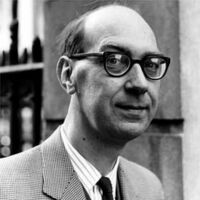
Philip Arthur Larkin (9 August 1922 – 2 December 1985) was an English poet and novelist. His first book of poetry, The North Ship, was published in 1945, followed by two novels, Jill (1946) and A Girl in Winter (1947), but he came to prominence in 1955 with the publication of his second collection of poems, The Less Deceived, followed by The Whitsun Weddings (1964) and High Windows (1974). He was the recipient of many honours, including the Queen's Gold Medal for Poetry. He was offered, but declined, the position of poet laureate in 1984, following the death of John Betjeman.
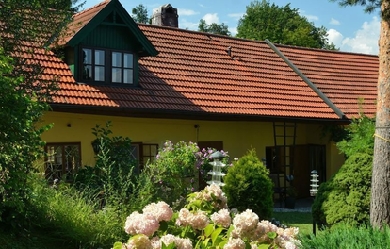
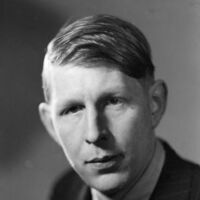
Wystan Hugh Auden (21 February 1907 – 29 September 1973), who published as W. H. Auden, was an Anglo-American poet, born in England, later an American citizen, regarded by many as one of the greatest writers of the 20th century. His work is noted for its stylistic and technical achievements, its engagement with moral and political issues, and its variety of tone, form and content. The central themes of his poetry are love, politics and citizenship, religion and morals, and the relationship between unique human beings and the anonymous, impersonal world of nature. Auden grew up in Birmingham in a professional middle class family and read English literature at Christ Church, Oxford. His early poems, written in the late 1920s and early 1930s, alternated between telegraphic modern styles and fluent traditional ones, were written in an intense and dramatic tone, and established his reputation as a left-wing political poet and prophet. He became uncomfortable in this role in the later 1930s, and abandoned it after he moved to the United States in 1939, where he became an American citizen in 1946. His poems in the 1940s explored religious and ethical themes in a less dramatic manner than his earlier works, but still combined traditional forms and styles with new forms devised by Auden himself. In the 1950s and 1960s many of his poems focused on the ways in which words revealed and concealed emotions, and he took a particular interest in writing opera librettos, a form ideally suited to direct expression of strong feelings.
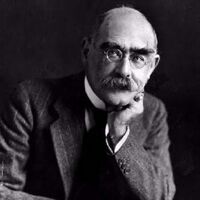
Joseph Rudyard Kipling (30 December 1865 – 18 January 1936) was an English novelist, short-story writer, poet, and journalist. He was born in British India, which inspired much of his work. Kipling was one of the most popular writers in England, in both prose and verse, in the late 19th and early 20th centuries. Henry James said: “Kipling strikes me personally as the most complete man of genius (as distinct from fine intelligence) that I have ever known.”
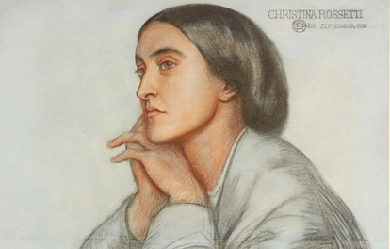
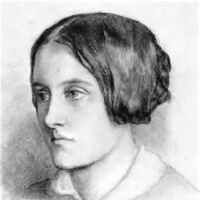
In 1830, Christina Rossetti was born in London, one of four children of Italian parents. Her father was the poet Gabriele Rossetti; her brother Dante Gabriel Rossetti also became a poet and a painter. Rossetti’s first poems were written in 1842 and printed in the private press of her grandfather. In 1850, under the pseudonym Ellen Alleyne, she contributed seven poems to the Pre-Raphaelite journal The Germ, which had been founded by her brother William Michael and his friends.
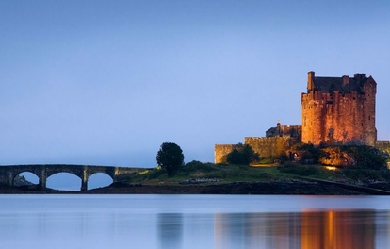
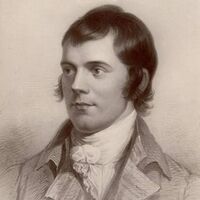
Robert Burns (25 January 1759 – 21 July 1796) (also known as Rabbie Burns, Scotland's favourite son, the Ploughman Poet, Robden of Solway Firth, the Bard of Ayrshire and in Scotland as simply The Bard) was a Scottish poet and a lyricist. He is widely regarded as the national poet of Scotland, and is celebrated worldwide. He is the best known of the poets who have written in the Scots language, although much of his writing is also in English and a “light” Scots dialect, accessible to an audience beyond Scotland. He also wrote in standard English, and in these his political or civil commentary is often at its most blunt.
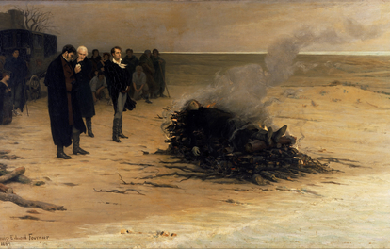
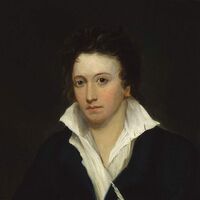
Percy Bysshe Shelley (4 August 1792 – 8 July 1822) was one of the major English Romantic poets and is critically regarded as among the finest lyric poets in the English language. Shelley was famous for his association with John Keats and Lord Byron. The novelist Mary Shelley (née Godwin) was his second wife. Shelley's unconventional life and uncompromising idealism, combined with his strong disapproving voice, made him a marginalized figure during his life, important in a fairly small circle of admirers, and opened him to criticism as well as praise afterward.
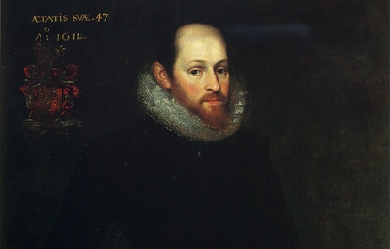
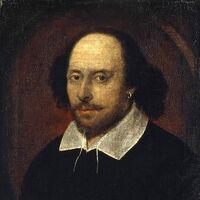
William Shakespeare (baptised 26 April 1564; died 23 April 1616) was an English poet and playwright, widely regarded as the greatest writer in the English language and the world's pre-eminent dramatist. He is often called England's national poet and the "Bard of Avon". His surviving works, including some collaborations, consist of about 38 plays, 154 sonnets, two long narrative poems, and several other poems. His plays have been translated into every major living language and are performed more often than those of any other playwright. Authorship Around 230 years after Shakespeare’s death, doubts began to be expressed about the authorship of the works attributed to him. Proposed alternative candidates include Francis Bacon, Christopher Marlowe, and Edward de Vere, 17th Earl of Oxford. Several “group theories” have also been proposed. All but a few Shakespeare scholars and literary historians consider it a fringe theory, with only a small minority of academics who believe that there is reason to question the traditional attribution, but interest in the subject, particularly the Oxfordian theory of Shakespeare authorship, continues into the 21st century.
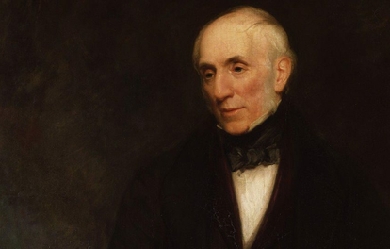
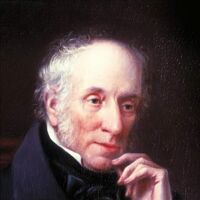
William Wordsworth (7 April 1770 – 23 April 1850) was a major English Romantic poet who, with Samuel Taylor Coleridge, helped to launch the Romantic Age in English literature with the 1798 joint publication Lyrical Ballads. Wordsworth's magnum opus is generally considered to be The Prelude, a semiautobiographical poem of his early years which he revised and expanded a number of times. It was posthumously titled and published, prior to which it was generally known as the poem "to Coleridge". Wordsworth was Britain's Poet Laureate from 1843 until his death in 1850. Early life The second of five children born to John Wordsworth and Ann Cookson, William Wordsworth was born on 7 April 1770 in Wordsworth House in Cockermouth, Cumberland—part of the scenic region in northwest England, the Lake District. His sister, the poet and diarist Dorothy Wordsworth, to whom he was close all his life, was born the following year, and the two were baptised together. They had three other siblings: Richard, the eldest, who became a lawyer; John, born after Dorothy, who went to sea and died in 1805 when the ship of which he was Master, the Earl of Abergavenny, was wrecked off the south coast of England; and Christopher, the youngest, who entered the Church and rose to be Master of Trinity College, Cambridge. Their father was a legal representative of James Lowther, 1st Earl of Lonsdale and, through his connections, lived in a large mansion in the small town. Wordsworth, as with his siblings, had little involvement with their father, and they would be distant from him until his death in 1783. Wordsworth's father, although rarely present, did teach him poetry, including that of Milton, Shakespeare and Spenser, in addition to allowing his son to rely on his own father's library. Along with spending time reading in Cockermouth, Wordsworth would also stay at his mother's parents house in Penrith, Cumberland. At Penrith, Wordsworth was exposed to the moors. Wordsworth could not get along with his grandparents and his uncle, and his hostile interactions with them distressed him to the point of contemplating suicide. After the death of their mother, in 1778, John Wordsworth sent William to Hawkshead Grammar School in Lancashire and Dorothy to live with relatives in Yorkshire; she and William would not meet again for another nine years. Although Hawkshead was Wordsworth's first serious experience with education, he had been taught to read by his mother and had attended a tiny school of low quality in Cockermouth. After the Cockermouth school, he was sent to a school in Penrith for the children of upper-class families and taught by Ann Birkett, a woman who insisted on instilling in her students traditions that included pursuing both scholarly and local activities, especially the festivals around Easter, May Day, and Shrove Tuesday. Wordsworth was taught both the Bible and the Spectator, but little else. It was at the school that Wordsworth was to meet the Hutchinsons, including Mary, who would be his future wife. Wordsworth made his debut as a writer in 1787 when he published a sonnet in The European Magazine. That same year he began attending St John's College, Cambridge, and received his B.A. degree in 1791. He returned to Hawkshead for his first two summer holidays, and often spent later holidays on walking tours, visiting places famous for the beauty of their landscape. In 1790, he took a walking tour of Europe, during which he toured the Alps extensively, and visited nearby areas of France, Switzerland, and Italy. Relationship with Annette Vallon In November 1791, Wordsworth visited Revolutionary France and became enthralled with the Republican movement. He fell in love with a French woman, Annette Vallon, who in 1792 gave birth to their child, Caroline. Because of lack of money and Britain's tensions with France, he returned alone to England the next year. The circumstances of his return and his subsequent behaviour raise doubts as to his declared wish to marry Annette, but he supported her and his daughter as best he could in later life. The Reign of Terror estranged him from the Republican movement, and war between France and Britain prevented him from seeing Annette and Caroline again for several years. There are strong suggestions that Wordsworth may have been depressed and emotionally unsettled in the mid-1790s. With the Peace of Amiens again allowing travel to France, in 1802 Wordsworth and his sister, Dorothy, visited Annette and Caroline in Calais. The purpose of the visit was to pave the way for his forthcoming marriage to Mary Hutchinson, and a mutually agreeable settlement was reached regarding Wordsworth's obligations. Afterwards he wrote the poem "It is a beauteous evening, calm and free," recalling his seaside walk with his daughter, whom he had not seen for ten years. At the conception of this poem, he had never seen his daughter before. The occurring lines reveal his deep love for both child and mother. First publication and Lyrical Ballads In his "Preface to Lyrical Ballads", which is called the "manifesto" of English Romantic criticism, Wordsworth calls his poems "experimental." The year 1793 saw Wordsworth's first published poetry with the collections An Evening Walk and Descriptive Sketches. He received a legacy of £900 from Raisley Calvert in 1795 so that he could pursue writing poetry. That year, he met Samuel Taylor Coleridge in Somerset. The two poets quickly developed a close friendship. In 1797, Wordsworth and his sister Dorothy moved to Alfoxton House, Somerset, just a few miles away from Coleridge's home in Nether Stowey. Together, Wordsworth and Coleridge (with insights from Dorothy) produced Lyrical Ballads (1798), an important work in the English Romantic movement. The volume gave neither Wordsworth's nor Coleridge's name as author. One of Wordsworth's most famous poems, "Tintern Abbey", was published in the work, along with Coleridge's "The Rime of the Ancient Mariner". The second edition, published in 1800, had only Wordsworth listed as the author, and included a preface to the poems, which was augmented significantly in the 1802 edition. This Preface to Lyrical Ballads is considered a central work of Romantic literary theory. In it, Wordsworth discusses what he sees as the elements of a new type of poetry, one based on the "real language of men" and which avoids the poetic diction of much 18th-century poetry. Here, Wordsworth gives his famous definition of poetry as "the spontaneous overflow of powerful emotions recollected in tranquility: it takes its origin from emotion recollected in tranquility." A fourth and final edition of Lyrical Ballads was published in 1805. The Borderers From 1795 to 1797, he wrote his only play, The Borderers, a verse tragedy set during the reign of King Henry III of England when Englishmen of the north country were in conflict with Scottish rovers. Wordsworth attempted to get the play staged in November 1797, but it was rejected by Thomas Harris, theatre manager of Covent Garden, who proclaimed it "impossible that the play should succeed in the representation". The rebuff was not received lightly by Wordsworth, and the play was not published until 1842, after substantial revision. Germany and move to the Lake District Wordsworth, Dorothy and Coleridge travelled to Germany in the autumn of 1798. While Coleridge was intellectually stimulated by the trip, its main effect on Wordsworth was to produce homesickness. During the harsh winter of 1798–99, Wordsworth lived with Dorothy in Goslar, and, despite extreme stress and loneliness, he began work on an autobiographical piece later titled The Prelude. He wrote a number of famous poems, including "The Lucy poems". He and his sister moved back to England, now to Dove Cottage in Grasmere in the Lake District, and this time with fellow poet Robert Southey nearby. Wordsworth, Coleridge and Southey came to be known as the "Lake Poets". Through this period, many of his poems revolve around themes of death, endurance, separation and grief. Marriage and children In 1802, after Wordsworth's return from his trip to France with Dorothy to visit Annette and Caroline, Lowther's heir, William Lowther, 1st Earl of Lonsdale, paid the ₤4, debt owed to Wordsworth's father incurred through Lowther's failure to pay his aide. Later that year, on October 4, Wordsworth married a childhood friend, Mary Hutchinson. Dorothy continued to live with the couple and grew close to Mary. The following year, Mary gave birth to the first of five children, three of whom predeceased William and Mary: * John Wordsworth (18 June 1803 – 1875). * Dora Wordsworth (16 August 1804 – 9 July 1847). * Thomas Wordsworth (15 June 1806 – 1 December 1812). * Catherine Wordsworth (6 September 1808 – 4 June 1812). * William "Willy" Wordsworth (12 May 1810 – 1883). Autobiographical work and Poems in Two Volumes Wordsworth had for years been making plans to write a long philosophical poem in three parts, which he intended to call The Recluse. He had in 1798–99 started an autobiographical poem, which he never named but called the "poem to Coleridge", which would serve as an appendix to The Recluse. In 1804, he began expanding this autobiographical work, having decided to make it a prologue rather than an appendix to the larger work he planned. By 1805, he had completed it, but refused to publish such a personal work until he had completed the whole of The Recluse. The death of his brother, John, in 1805 affected him strongly. The source of Wordsworth's philosophical allegiances as articulated in The Prelude and in such shorter works as "Lines composed a few miles above Tintern Abbey" has been the source of much critical debate. While it had long been supposed that Wordsworth relied chiefly on Coleridge for philosophical guidance, more recent scholarship has suggested that Wordsworth's ideas may have been formed years before he and Coleridge became friends in the mid 1790s. While in Revolutionary Paris in 1792, the 22-year-old Wordsworth made the acquaintance of the mysterious traveller John "Walking" Stewart (1747–1822), who was nearing the end of a thirty-years' peregrination from Madras, India, through Persia and Arabia, across Africa and all of Europe, and up through the fledgling United States. By the time of their association, Stewart had published an ambitious work of original materialist philosophy entitled The Apocalypse of Nature (London, 1791), to which many of Wordsworth's philosophical sentiments are likely indebted. In 1807, his Poems in Two Volumes were published, including "Ode: Intimations of Immortality from Recollections of Early Childhood". Up to this point Wordsworth was known publicly only for Lyrical Ballads, and he hoped this collection would cement his reputation. Its reception was lukewarm, however. For a time (starting in 1810), Wordsworth and Coleridge were estranged over the latter's opium addiction. Two of his children, Thomas and Catherine, died in 1812. The following year, he received an appointment as Distributor of Stamps for Westmorland, and the £400 per year income from the post made him financially secure. His family, including Dorothy, moved to Rydal Mount, Ambleside (between Grasmere and Rydal Water) in 1813, where he spent the rest of his life. The Prospectus In 1814 he published The Excursion as the second part of the three-part The Recluse. He had not completed the first and third parts, and never would. He did, however, write a poetic Prospectus to "The Recluse" in which he lays out the structure and intent of the poem. The Prospectus contains some of Wordsworth's most famous lines on the relation between the human mind and nature: My voice proclaims How exquisitely the individual Mind (And the progressive powers perhaps no less Of the whole species) to the external World Is fitted:--and how exquisitely, too, Theme this but little heard of among Men, The external World is fitted to the Mind. Some modern critics[who?] recognise a decline in his works beginning around the mid-1810s. But this decline was perhaps more a change in his lifestyle and beliefs, since most of the issues that characterise his early poetry (loss, death, endurance, separation and abandonment) were resolved in his writings. But, by 1820, he enjoyed the success accompanying a reversal in the contemporary critical opinion of his earlier works. Following the death of his friend the painter William Green in 1823, Wordsworth mended relations with Coleridge. The two were fully reconciled by 1828, when they toured the Rhineland together. Dorothy suffered from a severe illness in 1829 that rendered her an invalid for the remainder of her life. In 1835, Wordsworth gave Annette and Caroline the money they needed for support. The Poet Laureate and other honours Wordsworth received an honorary Doctor of Civil Law degree in 1838 from Durham University, and the same honour from Oxford University the next year. In 1842 the government awarded him a civil list pension amounting to £300 a year. With the death in 1843 of Robert Southey, Wordsworth became the Poet Laureate. He initially refused the honour, saying he was too old, but accepted when Prime Minister Robert Peel assured him "you shall have nothing required of you" (he became the only laureate to write no official poetry). When his daughter, Dora, died in 1847, his production of poetry came to a standstill. Death William Wordsworth died by re-aggravating a case of pleurisy on 23 April 1850, and was buried at St. Oswald's church in Grasmere. His widow Mary published his lengthy autobiographical "poem to Coleridge" as The Prelude several months after his death. Though this failed to arouse great interest in 1850, it has since come to be recognised as his masterpiece. Major works Lyrical Ballads, with a Few Other Poems (1798) * "Simon Lee" * "We are Seven" * "Lines Written in Early Spring" * "Expostulation and Reply" * "The Tables Turned" * "The Thorn" * "Lines Composed A Few Miles above Tintern Abbey" Lyrical Ballads, with Other Poems (1800) * Preface to the Lyrical Ballads * "Strange fits of passion have I known"[14] * "She Dwelt among the Untrodden Ways"[14] * "Three years she grew"[14] * "A Slumber Did my Spirit Seal"[14] * "I travelled among unknown men"[14] * "Lucy Gray" * "The Two April Mornings" * "Nutting" * "The Ruined Cottage" * "Michael" * "The Kitten At Play" Poems, in Two Volumes (1807) * "Resolution and Independence" * "I Wandered Lonely as a Cloud" Also known as "Daffodils" * "My Heart Leaps Up" * "Ode: Intimations of Immortality" * "Ode to Duty" * "The Solitary Reaper" * "Elegiac Stanzas" * "Composed upon Westminster Bridge, September 3, 1802" * "London, 1802" * "The World Is Too Much with Us" * Guide to the Lakes (1810) * The Excursion (1814) * Laodamia (1815, 1845) * The Prelude (1850) References Wikipedia – http://en.wikipedia.org/wiki/William_Wordsworth
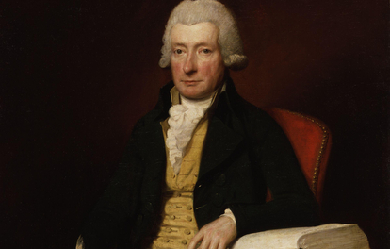
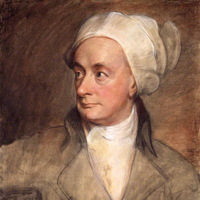
William Cowper (26 November 1731– 25 April 1800) was an English poet and hymnodist. One of the most popular poets of his time, Cowper changed the direction of 18th century nature poetry by writing of everyday life and scenes of the English countryside. In many ways, he was one of the forerunners of Romantic poetry. Samuel Taylor Coleridge called him “the best modern poet”, whilst William Wordsworth particularly admired his poem Yardley-Oak. He was a nephew of the poet Judith Madan.
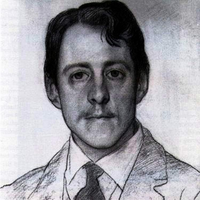
Robert Laurence Binyon, CH (10 August 1869– 10 March 1943) was an English poet, dramatist and art scholar. His most famous work, For the Fallen, is well known for being used in Remembrance Sunday services. Pre-war life Laurence Binyon was born in Lancaster, Lancashire, England. His parents were Frederick Binyon, and Mary Dockray. Mary’s father, Robert Benson Dockray, was the main engineer of the London and Birmingham Railway. The family were Quakers. Binyon studied at St Paul’s School, London. Then he read Classics (Honour Moderations) at Trinity College, Oxford, where he won the Newdigate Prize for poetry in 1891. Immediately after graduating in 1893, Binyon started working for the Department of Printed Books of the British Museum, writing catalogues for the museum and art monographs for himself. In 1895 his first book, Dutch Etchers of the Seventeenth Century, was published. In that same year, Binyon moved into the Museum’s Department of Prints and Drawings, under Campbell Dodgson. In 1909, Binyon became its Assistant Keeper, and in 1913 he was made the Keeper of the new Sub-Department of Oriental Prints and Drawings. Around this time he played a crucial role in the formation of Modernism in London by introducing young Imagist poets such as Ezra Pound, Richard Aldington and H.D. to East Asian visual art and literature. Many of Binyon’s books produced while at the Museum were influenced by his own sensibilities as a poet, although some are works of plain scholarship– such as his four-volume catalogue of all the Museum’s English drawings, and his seminal catalogue of Chinese and Japanese prints. In 1904 he married historian Cicely Margaret Powell, and the couple had three daughters. During those years, Binyon belonged to a circle of artists, as a regular patron of the Wiener Cafe of London. His fellow intellectuals there were Ezra Pound, Sir William Rothenstein, Walter Sickert, Charles Ricketts, Lucien Pissarro and Edmund Dulac. Binyon’s reputation before the war was such that, on the death of the Poet Laureate Alfred Austin in 1913, Binyon was among the names mentioned in the press as his likely successor (others named included Thomas Hardy, John Masefield and Rudyard Kipling; the post went to Robert Bridges). For the Fallen Moved by the opening of the Great War and the already high number of casualties of the British Expeditionary Force, in 1914 Laurence Binyon wrote his For the Fallen, with its Ode of Remembrance, as he was visiting the cliffs on the north Cornwall coast, either at Polzeath or at Portreath (at each of which places there is a plaque commemorating the event, though Binyon himself mentioned Polzeath in a 1939 interview. The confusion may be related to Porteath Farm being near Polzeath). The piece was published by The Times newspaper in September, when public feeling was affected by the recent Battle of Marne. Today Binyon’s most famous poem, For the Fallen, is often recited at Remembrance Sunday services in the UK; is an integral part of Anzac Day services in Australia and New Zealand and of the 11 November Remembrance Day services in Canada. The third and fourth verses of the poem (although often just the fourth) have thus been claimed as a tribute to all casualties of war, regardless of nation. They went with songs to the battle, they were young. Straight of limb, true of eyes, steady and aglow. They were staunch to the end against odds uncounted, They fell with their faces to the foe. They shall grow not old, as we that are left grow old: Age shall not weary them, nor the years condemn. At the going down of the sun and in the morning, We will remember them. They mingle not with their laughing comrades again; They sit no more at familiar tables of home; They have no lot in our labour of the day-time; They sleep beyond England’s foam Three of Binyon’s poems, including “For the Fallen”, were set by Sir Edward Elgar in his last major orchestra/choral work, The Spirit of England. In 1915, despite being too old to enlist in the First World War, Laurence Binyon volunteered at a British hospital for French soldiers, Hôpital Temporaire d’Arc-en-Barrois, Haute-Marne, France, working briefly as a hospital orderly. He returned in the summer of 1916 and took care of soldiers taken in from the Verdun battlefield. He wrote about his experiences in For Dauntless France (1918) and his poems, “Fetching the Wounded” and “The Distant Guns”, were inspired by his hospital service in Arc-en-Barrois. Artists Rifles, a CD audiobook published in 2004, includes a reading of For the Fallen by Binyon himself. The recording itself is undated and appeared on a 78 rpm disc issued in Japan. Other Great War poets heard on the CD include Siegfried Sassoon, Edmund Blunden, Robert Graves, David Jones and Edgell Rickword. Post-war life After the war, he returned to the British Museum and wrote numerous books on art; in particular on William Blake, Persian art, and Japanese art. His work on ancient Japanese and Chinese cultures offered strongly contextualised examples that inspired, among others, the poets Ezra Pound and W. B. Yeats. His work on Blake and his followers kept alive the then nearly-forgotten memory of the work of Samuel Palmer. Binyon’s duality of interests continued the traditional interest of British visionary Romanticism in the rich strangeness of Mediterranean and Oriental cultures. In 1931, his two volume Collected Poems appeared. In 1932, Binyon rose to be the Keeper of the Prints and Drawings Department, yet in 1933 he retired from the British Museum. He went to live in the country at Westridge Green, near Streatley (where his daughters also came to live during the Second World War). He continued writing poetry. In 1933–1934, Binyon was appointed Norton Professor of Poetry at Harvard University. He delivered a series of lectures on The Spirit of Man in Asian Art, which were published in 1935. Binyon continued his academic work: in May 1939 he gave the prestigious Romanes Lecture in Oxford on Art and Freedom, and in 1940 he was appointed the Byron Professor of English Literature at University of Athens. He worked there until forced to leave, narrowly escaping the German invasion of Greece in April 1941 . He was succeeded by Lord Dunsany, who held the chair in 1940-1941. Binyon had been friends with Ezra Pound since around 1909, and in the 1930s the two became especially close; Pound affectionately called him “BinBin”, and assisted Binyon with his translation of Dante. Another protégé was Arthur Waley, whom Binyon employed at the British Museum. Between 1933 and 1943, Binyon published his acclaimed translation of Dante’s Divine Comedy in an English version of terza rima, made with some editorial assistance by Ezra Pound. Its readership was dramatically increased when Paolo Milano selected it for the “The Portable Dante” in Viking’s Portable Library series. Binyon significantly revised his translation of all three parts for the project, and the volume went through three major editions and eight printings (while other volumes in the same series went out of print) before being replaced by the Mark Musa translation in 1981. At his death he was also working on a major three-part Arthurian trilogy, the first part of which was published after his death as The Madness of Merlin (1947). He died in Dunedin Nursing Home, Bath Road, Reading, on 10 March 1943 after an operation. A funeral service was held at Trinity College Chapel, Oxford, on 13 March 1943. There is a slate memorial in St. Mary’s Church, Aldworth, where Binyon’s ashes were scattered. On 11 November 1985, Binyon was among 16 Great War poets commemorated on a slate stone unveiled in Westminster Abbey’s Poets’ Corner. The inscription on the stone quotes a fellow Great War poet, Wilfred Owen. It reads: “My subject is War, and the pity of War. The Poetry is in the pity.” Daughters His three daughters Helen, Margaret and Nicolete became artists. Helen Binyon (1904–1979) studied with Paul Nash and Eric Ravilious, illustrating many books for the Oxford University Press, and was also a marionettist. She later taught puppetry and published Puppetry Today (1966) and Professional Puppetry in England (1973). Margaret Binyon wrote children’s books, which were illustrated by Helen. Nicolete, as Nicolete Gray, was a distinguished calligrapher and art scholar. Bibliography of key works Poems and verse * Lyric Poems (1894) * Porphyrion and other Poems (1898) * Odes (1901) * Death of Adam and Other Poems (1904) * London Visions (1908) * England and Other Poems (1909) * “For The Fallen”, The Times, 21 September 1914 * Winnowing Fan (1914) * The Anvil (1916) * The Cause (1917) * The New World: Poems (1918) * The Idols (1928) * Collected Poems Vol 1: London Visions, Narrative Poems, Translations. (1931) * Collected Poems Vol 2: Lyrical Poems. (1931) * The North Star and Other Poems (1941) * The Burning of the Leaves and Other Poems (1944) * The Madness of Merlin (1947) In 1915 Cyril Rootham set “For the Fallen” for chorus and orchestra, first performed in 1919 by the Cambridge University Musical Society conducted by the composer. Edward Elgar set to music three of Binyon’s poems ("The Fourth of August", “To Women”, and “For the Fallen”, published within the collection “The Winnowing Fan”) as The Spirit of England, Op. 80, for tenor or soprano solo, chorus and orchestra (1917). English arts and myth * Dutch Etchers of the Seventeenth Century (1895), Binyon’s first book on painting * John Crone and John Sell Cotman (1897) * William Blake: Being all his Woodcuts Photographically Reproduced in Facsimile (1902) * English Poetry in its relation to painting and the other arts (1918) * Drawings and Engravings of William Blake (1922) * Arthur: A Tragedy (1923) * The Followers of William Blake (1925) * The Engraved Designs of William Blake (1926) * Landscape in English Art and Poetry (1931) * English Watercolours (1933) * Gerard Hopkins and his influence (1939) * Art and freedom. (The Romanes lecture, delivered 25 May 1939). Oxford: The Clarendon press, (1939) Japanese and Persian arts * Painting in the Far East (1908) * Japanese Art (1909) * Flight of the Dragon (1911) * The Court Painters of the Grand Moguls (1921) * Japanese Colour Prints (1923) * The Poems of Nizami (1928) (Translation) * Persian Miniature Painting (1933) * The Spirit of Man in Asian Art (1936) Autobiography * For Dauntless France (1918) (War memoir) Biography * Botticelli (1913) * Akbar (1932) Stage plays * Brief Candles A verse-drama about the decision of Richard III to dispatch his two nephews * “Paris and Oenone”, 1906 * Godstow Nunnery: Play * Boadicea; A Play in eight Scenes * Attila: a Tragedy in Four Acts * Ayuli: a Play in three Acts and an Epilogue * Sophro the Wise: a Play for Children * (Most of the above were written for John Masefield’s theatre). * Charles Villiers Stanford wrote incidental music for Attila in 1907. References Wikipedia—https://en.wikipedia.org/wiki/Laurence_Binyon
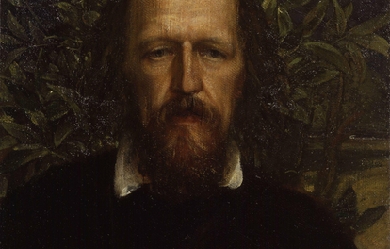
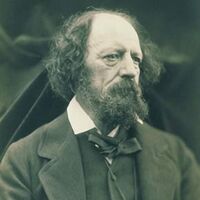
Alfred Tennyson, 1st Baron Tennyson, FRS (6 August 1809 – 6 October 1892) was Poet Laureate of the United Kingdom during much of Queen Victoria's reign and remains one of the most popular poets in the English language. A number of phrases from Tennyson’s work have become commonplaces of the English language, including “Nature, red in tooth and claw”, “'Tis better to have loved and lost / Than never to have loved at all”, “Theirs not to reason why, / Theirs but to do and die”, “My strength is as the strength of ten, / Because my heart is pure”, “Knowledge comes, but Wisdom lingers”, and “The old order changeth, yielding place to new”. He is the ninth most frequently quoted writer in The Oxford Dictionary of Quotations.
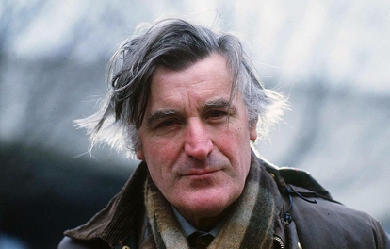
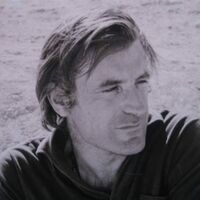
Edward James (Ted) Hughes was born in Mytholmroyd, in the West Riding district of Yorkshire, on August 17, 1930. His childhood was quiet and dominately rural. When he was seven years old, his family moved to the small town of Mexborough in South Yorkshire, and the landscape of the moors of that area informed his poetry throughout his life. Hughes graduated from Cambridge in 1954. A few years later, in 1956, he co-founded the literary magazine St. Botolph’s Review with a handful of other editors. At the launch party for the magazine, he met Sylvia Plath. A few short months later, on June 16, 1956, they were married.
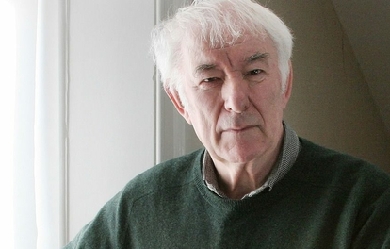
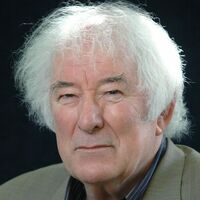
Seamus Justin Heaney (13 April 1939 – 30 August 2013) was an Irish poet, playwright and translator. He received the 1995 Nobel Prize in Literature. Among his best-known works is Death of a Naturalist (1966), his first major published volume. Heaney was and is still recognised as one of the principal contributors to poetry in Ireland during his lifetime. American poet Robert Lowell described him as “the most important Irish poet since Yeats”, and many others, including the academic John Sutherland, have said that he was “the greatest poet of our age”. Robert Pinsky has stated that “with his wonderful gift of eye and ear Heaney has the gift of the story-teller.” Upon his death in 2013, The Independent described him as “probably the best-known poet in the world”.
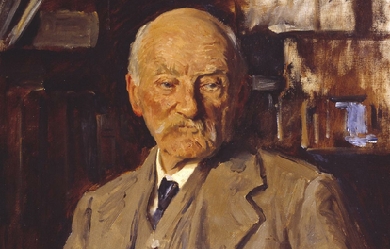
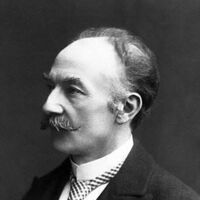
Thomas Hardy (2 June 1840 – 11 January 1928) was an English novelist and poet. While his works typically belong to the Naturalism movement, several poems display elements of the previous Romantic and Enlightenment periods of literature, such as his fascination with the supernatural. While he regarded himself primarily as a poet who composed novels mainly for financial gain, he became and continues to be widely regarded for his novels, such as Tess of the d'Urbervilles and Far from the Madding Crowd. Hardy's poetry, first published in his fifties, has come to be as well regarded as his novels and has had a significant influence over modern English poetry, especially after The Movement poets of the 1950s and 1960s cited Hardy as a major figure.
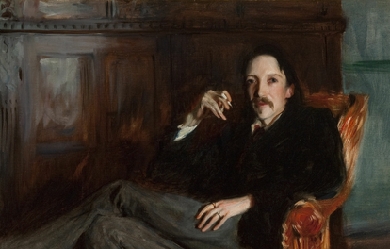
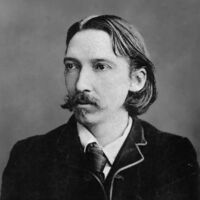
Robert Louis Balfour Stevenson (13 November 1850 – 3 December 1894) was a Scottish novelist, poet, essayist and travel writer. His best-known books include Treasure Island, Kidnapped, and Strange Case of Dr Jekyll and Mr Hyde. A literary celebrity during his lifetime, Stevenson now ranks among the 26 most translated authors in the world. He has been greatly admired by many authors, including Jorge Luis Borges, Ernest Hemingway, Rudyard Kipling, Marcel Schwob, Vladimir Nabokov, J. M. Barrie, and G. K. Chesterton, who said of him that he “seemed to pick the right word up on the point of his pen, like a man playing spillikins”.
_and_brother_Ronald_-_Google_Art_Project.jpg)
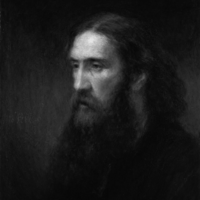
George MacDonald (10 December 1824– 18 September 1905) was a Scottish author, poet, and Christian minister. He was a pioneering figure in the field of fantasy literature and the mentor of fellow writer Lewis Carroll. His writings have been cited as a major literary influence by many notable authors including W. H. Auden, C. S. Lewis, J. R. R. Tolkien, Walter de la Mare, E. Nesbit and Madeleine L’Engle. C. S. Lewis wrote that he regarded MacDonald as his “master”: “Picking up a copy of Phantastes one day at a train-station bookstall, I began to read. A few hours later,” said Lewis, “I knew that I had crossed a great frontier.” G. K. Chesterton cited The Princess and the Goblin as a book that had “made a difference to my whole existence”. Elizabeth Yates wrote of Sir Gibbie, “It moved me the way books did when, as a child, the great gates of literature began to open and first encounters with noble thoughts and utterances were unspeakably thrilling.” Even Mark Twain, who initially disliked MacDonald, became friends with him, and there is some evidence that Twain was influenced by MacDonald. Christian author Oswald Chambers (1874–1917) wrote in Christian Disciplines, vol. 1, (pub. 1934) that “it is a striking indication of the trend and shallowness of the modern reading public that George MacDonald’s books have been so neglected”. In addition to his fairy tales, MacDonald wrote several works on Christian apologetics including several that defended his view of Christian Universalism. Early life George MacDonald was born on 10 December 1824 at Huntly, Aberdeenshire, Scotland. His father, a farmer, was one of the MacDonalds of Glen Coe, and a direct descendant of one of the families that suffered in the massacre of 1692. The Doric dialect of the Aberdeenshire area appears in the dialogue of some of his non-fantasy novels. MacDonald grew up in the Congregational Church, with an atmosphere of Calvinism. But MacDonald never felt comfortable with some aspects of Calvinist doctrine; indeed, legend has itt that when the doctrine of predestination was first explained to him, he burst into tears (although assured that he was one of the elect). Later novels, such as Robert Falconer and Lilith, show a distaste for the idea that God’s electing love is limited to some and denied to others. MacDonald graduated from the University of Aberdeen, and then went to London, studying at Highbury College for the Congregational ministry. In 1850 he was appointed pastor of Trinity Congregational Church, Arundel, but his sermons (preaching God’s universal love and the possibility that none would, ultimately, fail to unite with God) met with little favour and his salary was cut in half. Later he was engaged in ministerial work in Manchester. He left that because of poor health, and after a short sojourn in Algiers he settled in London and taught for some time at the University of London. MacDonald was also for a time editor of Good Words for the Young, and lectured successfully in the United States during 1872–1873. Work George MacDonald’s best-known works are Phantastes, The Princess and the Goblin, At the Back of the North Wind, and Lilith, all fantasy novels, and fairy tales such as “The Light Princess”, “The Golden Key”, and “The Wise Woman”. “I write, not for children,” he wrote, “but for the child-like, whether they be of five, or fifty, or seventy-five.” MacDonald also published some volumes of sermons, the pulpit not having proved an unreservedly successful venue. MacDonald also served as a mentor to Lewis Carroll (the pen-name of Rev. Charles Lutwidge Dodgson); it was MacDonald’s advice, and the enthusiastic reception of Alice by MacDonald’s many sons and daughters, that convinced Carroll to submit Alice for publication. Carroll, one of the finest Victorian photographers, also created photographic portraits of several of the MacDonald children. MacDonald was also friends with John Ruskin and served as a go-between in Ruskin’s long courtship with Rose La Touche. MacDonald was acquainted with most of the literary luminaries of the day; a surviving group photograph shows him with Tennyson, Dickens, Wilkie Collins, Trollope, Ruskin, Lewes, and Thackeray. While in America he was a friend of Longfellow and Walt Whitman. In 1877 he was given a civil list pension. From 1879 he and his family moved to Bordighera in a place much loved by British expatriates, the Riviera dei Fiori in Liguria, Italy, almost on the French border. In that locality there also was an Anglican Church, which he attended. Deeply enamoured of the Riviera, he spent there 20 years, writing almost half of his whole literary production, especially the fantasy work. In that Ligurian town MacDonald founded a literary studio named Casa Coraggio (Bravery House), which soon became one of the most renowned cultural centres of that period, well attended by British and Italian travellers, and by locals. In that house representations were often held of classic plays, and readings were given of Dante and Shakespeare. In 1900 he moved into St George’s Wood, Haslemere, a house designed for him by his son, Robert Falconer MacDonald, and the building overseen by his eldest son, Greville MacDonald. He died on 18 September 1905 in Ashtead, (Surrey). He was cremated and his ashes buried in Bordighera, in the English cemetery, along with his wife Louisa and daughters Lilia and Grace. As hinted above, MacDonald’s use of fantasy as a literary medium for exploring the human condition greatly influenced a generation of such notable authors as C. S. Lewis (who featured him as a character in his The Great Divorce), J. R. R. Tolkien, and Madeleine L’Engle. MacDonald’s non-fantasy novels, such as Alec Forbes, had their influence as well; they were among the first realistic Scottish novels, and as such MacDonald has been credited with founding the “kailyard school” of Scottish writing. His son Greville MacDonald became a noted medical specialist, a pioneer of the Peasant Arts movement, and also wrote numerous fairy tales for children. Greville ensured that new editions of his father’s works were published. Another son, Ronald MacDonald, was also a novelist. Ronald’s son, Philip MacDonald, (George MacDonald’s grandson) became a very well known Hollywood screenwriter. Theology MacDonald rejected the doctrine of penal substitutionary atonement as developed by John Calvin, which argues that Christ has taken the place of sinners and is punished by the wrath of God in their place, believing that in turn it raised serious questions about the character and nature of God. Instead, he taught that Christ had come to save people from their sins, and not from a Divine penalty for their sins. The problem was not the need to appease a wrathful God but the disease of cosmic evil itself. George MacDonald frequently described the Atonement in terms similar to the Christus Victor theory. MacDonald posed the rhetorical question, “Did he not foil and slay evil by letting all the waves and billows of its horrid sea break upon him, go over him, and die without rebound—spend their rage, fall defeated, and cease? Verily, he made atonement!” MacDonald was convinced that God does not punish except to amend, and that the sole end of His greatest anger is the amelioration of the guilty. As the doctor uses fire and steel in certain deep-seated diseases, so God may use hell-fire if necessary to heal the hardened sinner. MacDonald declared, “I believe that no hell will be lacking which would help the just mercy of God to redeem his children.” MacDonald posed the rhetorical question, “When we say that God is Love, do we teach men that their fear of Him is groundless?” He replied, “No. As much as they fear will come upon them, possibly far more.... The wrath will consume what they call themselves; so that the selves God made shall appear.” However, true repentance, in the sense of freely chosen moral growth, is essential to this process, and, in MacDonald’s optimistic view, inevitable for all beings (see universal reconciliation). He recognised the theoretical possibility that, bathed in the eschatological divine light, some might perceive right and wrong for what they are but still refuse to be transfigured by operation of God’s fires of love, but he did not think this likely. In this theology of divine punishment, MacDonald stands in opposition to Augustine of Hippo, and in agreement with the Greek Church Fathers Clement of Alexandria, Origen, and St. Gregory of Nyssa, although it is unknown whether MacDonald had a working familiarity with Patristics or Eastern Orthodox Christianity. At least an indirect influence is likely, because F. D. Maurice, who influenced MacDonald, knew the Greek Fathers, especially Clement, very well. MacDonald states his theological views most distinctly in the sermon Justice found in the third volume of Unspoken Sermons. In his introduction to George MacDonald: An Anthology, C. S. Lewis speaks highly of MacDonald’s theology: “This collection, as I have said, was designed not to revive MacDonald’s literary reputation but to spread his religious teaching. Hence most of my extracts are taken from the three volumes of Unspoken Sermons. My own debt to this book is almost as great as one man can owe to another: and nearly all serious inquirers to whom I have introduced it acknowledge that it has given them great help—sometimes indispensable help toward the very acceptance of the Christian faith. ... I know hardly any other writer who seems to be closer, or more continually close, to the Spirit of Christ Himself. Hence his Christ-like union of tenderness and severity. Nowhere else outside the New Testament have I found terror and comfort so intertwined.... In making this collection I was discharging a debt of justice. I have never concealed the fact that I regarded him as my master; indeed I fancy I have never written a book in which I did not quote from him. But it has not seemed to me that those who have received my books kindly take even now sufficient notice of the affiliation. Honesty drives me to emphasize it.” Bibliography Fantasy * Phantastes: A Fairie Romance for Men and Women (1858) * “Cross Purposes” (1862) * Adela Cathcart (1864), containing “The Light Princess”, “The Shadows”, and other short stories * The Portent: A Story of the Inner Vision of the Highlanders, Commonly Called “The Second Sight” (1864) * Dealings with the Fairies (1867), containing “The Golden Key”, “The Light Princess”, “The Shadows”, and other short stories * At the Back of the North Wind (1871) * Works of Fancy and Imagination (1871), including Within and Without, “Cross Purposes”, “The Light Princess”, “The Golden Key”, and other works * The Princess and the Goblin (1872) * The Wise Woman: A Parable (1875) (Published also as “The Lost Princess: A Double Story”; or as “A Double Story”.) * The Gifts of the Child Christ and Other Tales (1882; republished as Stephen Archer and Other Tales) * The Day Boy and the Night Girl (1882) * The Princess and Curdie (1883), a sequel to The Princess and the Goblin * The Flight of the Shadow (1891) * Lilith: A Romance (1895) Realistic fiction * David Elginbrod (1863; republished as The Tutor’s First Love), originally published in three volumes * Alec Forbes of Howglen (1865; republished as The Maiden’s Bequest) * Annals of a Quiet Neighbourhood (1867) * Guild Court: A London Story (1868) * Robert Falconer (1868; republished as The Musician’s Quest) * The Seaboard Parish (1869), a sequel to Annals of a Quiet Neighbourhood * Ranald Bannerman’s Boyhood (1871) * Wilfrid Cumbermede (1871–72) * The Vicar’s Daughter (1871–72), a sequel to Annals of a Quiet Neighborhood and The Seaboard Parish * The History of Gutta Percha Willie, the Working Genius (1873), usually called simply Gutta Percha Willie * Malcolm (1875) * St. George and St. Michael (1876) * Thomas Wingfold, Curate (1876; republished as The Curate’s Awakening) * The Marquis of Lossie (1877; republished as The Marquis’ Secret), the second book of Malcolm * Paul Faber, Surgeon (1879; republished as The Lady’s Confession), a sequel to Thomas Wingfold, Curate * Sir Gibbie (1879; republished as The Baronet’s Song) * Mary Marston (1881; republished as A Daughter’s Devotion) * Warlock o’ Glenwarlock (1881; republished as Castle Warlock and The Laird’s Inheritance) * Weighed and Wanting (1882; republished as A Gentlewoman’s Choice) * Donal Grant (1883; republished as The Shepherd’s Castle), a sequel to Sir Gibbie * What’s Mine’s Mine (1886; republished as The Highlander’s Last Song) * Home Again: A Tale (1887; republished as The Poet’s Homecoming) * The Elect Lady (1888; republished as The Landlady’s Master) * A Rough Shaking (1891) * There and Back (1891; republished as The Baron’s Apprenticeship), a sequel to Thomas Wingfold, Curate and Paul Faber, Surgeon * Heather and Snow (1893; republished as The Peasant Girl’s Dream) * Salted with Fire (1896; republished as The Minister’s Restoration) * Far Above Rubies (1898) Poetry * Twelve of the Spiritual Songs of Novalis (1851), privately printed translation of the poetry of Novalis * Within and Without: A Dramatic Poem (1855) * Poems (1857) * “A Hidden Life” and Other Poems (1864) * “The Disciple” and Other Poems (1867) * Exotics: A Translation of the Spiritual Songs of Novalis, the Hymn-book of Luther, and Other Poems from the German and Italian (1876) * Dramatic and Miscellaneous Poems (1876) * Diary of an Old Soul (1880) * A Book of Strife, in the Form of the Diary of an Old Soul (1880), privately printed * The Threefold Cord: Poems by Three Friends (1883), privately printed, with Greville Matheson and John Hill MacDonald * Poems (1887) * The Poetical Works of George MacDonald, 2 Volumes (1893) * Scotch Songs and Ballads (1893) * Rampolli: Growths from a Long-planted Root (1897) Nonfiction * Unspoken Sermons (1867) * England’s Antiphon (1868, 1874) * The Miracles of Our Lord (1870) * Cheerful Words from the Writing of George MacDonald (1880), compiled by E. E. Brown * Orts: Chiefly Papers on the Imagination, and on Shakespeare (1882) * “Preface” (1884) to Letters from Hell (1866) by Valdemar Adolph Thisted * The Tragedie of Hamlet, Prince of Denmarke: A Study With the Test of the Folio of 1623 (1885) * Unspoken Sermons, Second Series (1885) * Unspoken Sermons, Third Series (1889) * A Cabinet of Gems, Cut and Polished by Sir Philip Sidney; Now, for the More Radiance, Presented Without Their Setting by George MacDonald (1891) * The Hope of the Gospel (1892) * A Dish of Orts (1893) * Beautiful Thoughts from George MacDonald (1894), compiled by Elizabeth Dougall In popular culture * (Alphabetical by artist) * Christian celtic punk band Ballydowse have a song called “George MacDonald” on their album Out of the Fertile Crescent. The song is both taken from MacDonald’s poem “My Two Geniuses” and liberally quoted from Phantastes. * American classical composer John Craton has utilized several of MacDonald’s stories in his works, including “The Gray Wolf” (in a tone poem of the same name for solo mandolin– 2006) and portions of “The Cruel Painter”, Lilith, and The Light Princess (in Three Tableaux from George MacDonald for mandolin, recorder, and cello– 2011). * Contemporary new-age musician Jeff Johnson wrote a song titled “The Golden Key” based on George MacDonald’s story of the same name. He has also written several other songs inspired by MacDonald and the Inklings. * Jazz pianist and recording artist Ray Lyon has a song on his CD Beginning to See (2007), called “Up The Spiral Stairs”, which features lyrics from MacDonald’s 26 and 27 September devotional readings from the book Diary of an Old Soul. * A verse from The Light Princess is cited in the “Beauty and the Beast” song by Nightwish. * Rock group The Waterboys titled their album Room to Roam (1990) after a passage in MacDonald’s Phantastes, also found in Lilith. The title track of the album comprises a MacDonald poem from the text of Phantastes set to music by the band. The novels Lilith and Phantastes are both named as books in a library, in the title track of another Waterboys album, Universal Hall (2003). (The Waterboys have also quoted from C. S. Lewis in several songs, including “Church Not Made With Hands” and “Further Up, Further In”, confirming the enduring link in modern pop culture between MacDonald and Lewis.) References Wikipedia—https://en.wikipedia.org/wiki/George_MacDonald
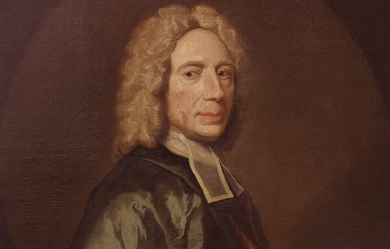
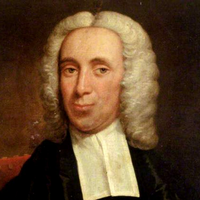
Isaac Watts (17 July 1674– 25 November 1748) was an English Christian minister, hymnwriter, theologian and logician. A prolific and popular hymn writer, his work was part of evangelization. He was recognized as the “Father of English Hymnody”, credited with some 750 hymns. Many of his hymns remain in use today and have been translated into numerous languages.
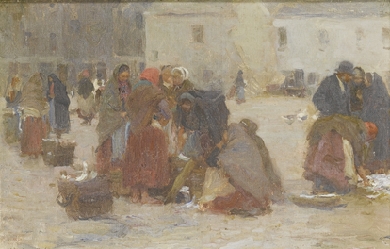
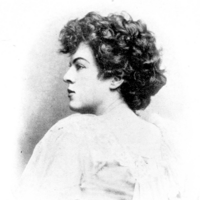
Dora Maria Sigerson Shorter (16 August 1866– 6 January 1918) was an Irish poet and sculptor, who after her marriage in 1895 wrote under the name Dora Sigerson Shorter. She was born in Dublin, Ireland, the daughter of George Sigerson, a surgeon and writer, and Hester (née Varian), also a writer. She was a major figure of the Irish Literary Revival, publishing many collections of poetry from 1893. Her friends included Katharine Tynan, Rose Kavanagh and Alice Furlong, writers and poets. In 1895 she married Clement King Shorter, an English journalist and literary critic. They lived together in London, until her death at age 51 from undisclosed causes.
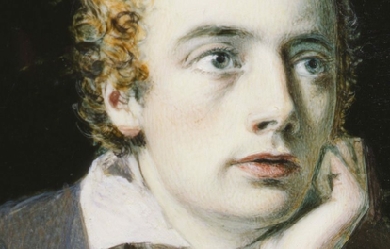
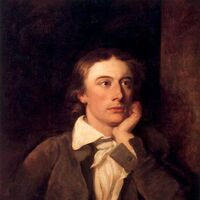
English Romantic poet John Keats was born on October 31, 1795, in London. The oldest of four children, he lost both his parents at a young age. His father, a livery-stable keeper, died when Keats was eight; his mother died of tuberculosis six years later. After his mother's death, Keats's maternal grandmother appointed two London merchants, Richard Abbey and John Rowland Sandell, as guardians. Abbey, a prosperous tea broker, assumed the bulk of this responsibility, while Sandell played only a minor role. When Keats was fifteen, Abbey withdrew him from the Clarke School, Enfield, to apprentice with an apothecary-surgeon and study medicine in a London hospital. In 1816 Keats became a licensed apothecary, but he never practiced his profession, deciding instead to write poetry.
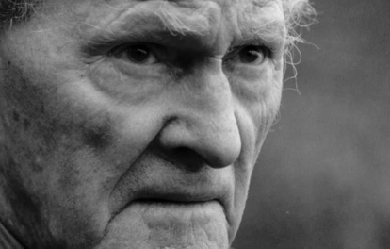
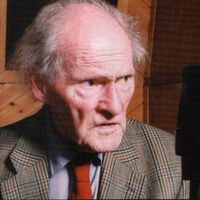
Ronald Stuart Thomas (29 March 1913 – 25 September 2000), published as R. S. Thomas, was a Welsh poet and Anglican priest who was noted for his nationalism, spirituality and deep dislike of the anglicisation of Wales. In 1955, John Betjeman, in his introduction to the first collection of Thomas’s poetry to be produced by a major publisher, Song at the Year's Turning, predicted that Thomas would be remembered long after Betjeman himself was forgotten. M. Wynn Thomas said: "He was the Aleksandr Solzhenitsyn of Wales because he was such a troubler of the Welsh conscience. He was one of the major English language and European poets of the 20th century." R. S. Thomas was born in Cardiff, the only child of Thomas Hubert and Margaret (née Davis). The family moved to Holyhead in 1918 because of his father's work in the merchant navy. He was awarded a bursary in 1932 to study at Bangor University, where he read Classics. In 1936, having completed his theological training at St. Michael's College, Llandaff, he was ordained as a priest in the Church in Wales. From 1936 to 1940 he was the curate of Chirk, Denbighshire, where he met his future wife, Mildred (Elsi) Eldridge, an English artist. He subsequently became curate at Tallarn Green, Flintshire. Thomas and Mildred were married in 1940 and remained together until her death in 1991. Their son, Gwydion, was born 29 August 1945. The Thomas family lived on a tiny income and lacked the comforts of modern life, largely by the Thomas's choice. One of the few household amenities the family ever owned, a vacuum cleaner, was rejected because Thomas decided it was too noisy. For twelve years, from 1942 to 1954, Thomas was rector at Manafon, near Welshpool in rural Montgomeryshire. It was during his time at Manafon that he first began to study Welsh and that he published his first three volumes of poetry, The Stones of the Field, An Acre of Land and The Minister. Thomas' poetry achieved a breakthrough with the publication of his fourth book Song at the Year's Turning, in effect a collected edition of his first three volumes, which was critically very well received and opened with Betjeman's famous introduction. His position was also helped by winning the Royal Society of Literature's Heinemann Award. Thomas learnt the Welsh language at age 30, too late in life, he said, to be able to write poetry in it. The 1960s saw him working in a predominantly Welsh speaking community and he later wrote two prose works in Welsh, Neb (English: Nobody), an ironic and revealing autobiography written in the third person, and Blwyddyn yn Llŷn (English: A Year in Llŷn). In 1964 he won the Queen's Gold Medal for Poetry. From 1967 to 1978 he was vicar at St Hywyn's Church (built 1137) in Aberdaron at the western tip of the Llŷn Peninsula. Thomas retired from church ministry in 1978 and he and his wife relocated to Y Rhiw, in "a tiny, unheated cottage in one of the most beautiful parts of Wales, where, however, the temperature sometimes dipped below freezing", according to Theodore Dalrymple. Free from the constraints of the church he was able to become more political and active in the campaigns that were important to him. He became a fierce advocate of Welsh nationalism, although he never supported Plaid Cymru because he believed they did not go far enough in their opposition to England. In 1996 Thomas was nominated for the Nobel Prize for Literature (the winner that year was Seamus Heaney). Thomas died on 25 September 2000, aged 87, at his home at Pentrefelin near Criccieth. He had been ill with heart trouble and had been treated at Gwynnedd hospital until two weeks before he died. After his death an event celebrating his life and poetry was held in Westminster Abbey with readings from Heaney, Andrew Motion, Gillian Clarke and John Burnside. Thomas's ashes are buried close to the door of St. John's Church, Porthmadog, Gwynedd. Beliefs Thomas believed in what he called "the true Wales of my imagination", a Welsh-speaking, aboriginal community that was in tune with the natural world. He viewed western (specifically English) materialism and greed, represented in the poetry by his mythical "Machine", as the destroyers of community. He could tolerate neither the English who bought up Wales and, in his view, stripped it of its wild and essential nature, nor the Welsh whom he saw as all too eager to kowtow to English money and influence. This may help explain why Thomas was an ardent supporter of CND and described himself as a pacifist but also why he supported the Meibion Glyndŵr fire-bombings of English-owned holiday cottages in rural Wales. On this subject he said in 1998, "what is one death against the death of the whole Welsh nation?" He was also active in wildlife preservation and worked with the RSPB and Welsh volunteer organisations for the preservation of the Red Kite. He resigned his RSPB membership over their plans to introduce non-native kites to Wales. Thomas's son, Gwydion, a resident of Thailand, recalls his father's sermons, in which he would "drone on" to absurd lengths about the evil of refrigerators, washing machines, televisions and other modern devices. Thomas preached that they were all part of the temptation of scrambling after gadgets rather than attending to more spiritual needs. "It was the Machine, you see", Gwydion Thomas explained to a biographer. "This to a congregation that didn’t have any of these things and were longing for them." Although he may have taken some ideas to extreme lengths, Theodore Dalrymple wrote, Thomas "was raising a deep and unanswered question: What is life for? Is it simply to consume more and more, and divert ourselves with ever more elaborate entertainments and gadgetry? What will this do to our souls?" Although he was a cleric, he was not always charitable and was known for being awkward and taciturn. Some critics have interpreted photographs of him as indicating he was "formidable, bad-tempered, and apparently humorless." Works Almost all of Thomas's work concerns the Welsh landscape and the Welsh people, themes with both political and spiritual subtext. His views on the position of the Welsh people, as a conquered people are never far below the surface. As a cleric, his religious views are also present in his works. His earlier works focus on the personal stories of his parishioners, the farm labourers and working men and their wives, challenging the cosy view of the traditional pastoral poem with harsh and vivid descriptions of rural lives. The beauty of the landscape, although ever-present, is never suggested as a compensation for the low pay or monotonous conditions of farm work. This direct view of "country life" comes as a challenge to many English writers writing on similar subjects and challenging the more pastoral works of such as contemporary poets as Dylan Thomas. Thomas's later works were of a more metaphysical nature, more experimental in their style and focusing more overtly on his spirituality. Laboratories of the Spirit (1975) gives, in its title, a hint at this development and also reveals Thomas's increasing experiments with scientific metaphor. He described this shift as an investigation into the "adult geometry of the mind".} Fearing that poetry was becoming a dying art, inaccessible to those who most needed it, "he attempted to make spiritually minded poems relevant within, and relevant to, a science-minded, post-industrial world", to represent that world both in form and in content even as he rejected its machinations. Despite his nationalism Thomas could be hard on his fellow countrymen. Often his works read as more of a criticism of Welshness than a celebration. He himself said there is a "lack of love for human beings" in his poetry. Other critics have not been so harsh. Al Alvarez said: "He was wonderful, very pure, very bitter but the bitterness was beautifully and very sparely rendered. He was completely authoritative, a very, very fine poet, completely off on his own, out of the loop but a real individual. It's not about being a major or minor poet. It's about getting a work absolutely right by your own standards and he did that wonderfully well." Thomas's final works commonly sold 20,000 copies in Britain alone. Books * The Stones of the Field (1946) * An Acre of Land (1952) * The Minister (1953) * Song at the Year's Turning (1955) * Poetry for Supper (1958) * Tares, [Corn-weed] (1961) * The Bread of Truth (1963) * Words and the Poet (1964, lecture) * Pietà (1966) * Not That He Brought Flowers (1968) * H'm (1972) * What is a Welshman? (1974) * Laboratories of the Spirit (1975) * Abercuawg (1976, lecture) * The Way of It (1977) * Frequencies (1978) * Between Here and Now (1981) * Ingrowing Thoughts (1985) * Neb (1985) in Welsh, autobiography, written in the third person * Experimenting with an Amen (1986) * Welsh Airs (1987) * The Echoes Return Slow (1988) * Counterpoint (1990) * Blwyddyn yn Llŷn (1990) in Welsh * Pe Medrwn Yr Iaith : ac ysgrifau eraill ed. Tony Brown & Bedwyr L. Jones, essays in Welsh (1990) * Mass for Hard Times (1992) * No Truce with the Furies (1995) * Autobiographies (1997, collection of prose writings) * Residues (2002, posthumously) References Wikipedia - http://en.wikipedia.org/wiki/R._S._Thomas
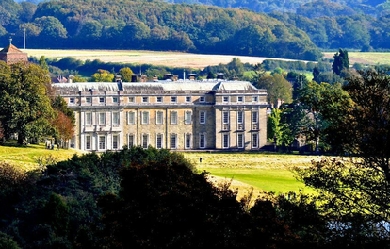
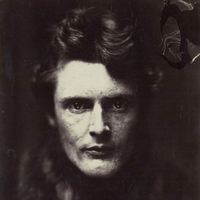
Wilfrid Scawen Blunt (17 August 1840– 10 September 1922) (sometimes spelled “Wilfred”) was an English poet and writer. He and his wife, Lady Anne Blunt travelled in the Middle East and were instrumental in preserving the Arabian horse bloodlines through their farm, the Crabbet Arabian Stud. He was best known for his poetry, which was published in a collected edition in 1914, but also wrote a number of political essays and polemics. Blunt is also known for his views against imperialism, viewed as relatively enlightened for his time. Early life Blunt was born at Petworth House in Sussex and served in the Diplomatic Service from 1858 to 1869. He was raised in the faith of his mother, a Catholic convert, and educated at Twyford School, Stonyhurst, and at St Mary’s College, Oscott. His most memorable line of poetry on the subject comes from Satan Absolved (1899), where the devil, answering a Kiplingesque remark by God, snaps back: ‘The white man’s burden, Lord, is the burden of his cash’ Here, Longford explains, 'Blunt stood Rudyard Kipling’s familiar concept on its head, arguing that the imperialists’ burden is not their moral responsibility for the colonised peoples, but their urge to make money out of them.' Personal life In 1869, Blunt married Lady Anne Noel, the daughter of the Earl of Lovelace and Ada Lovelace, and granddaughter of Lord Byron. Together the Blunts travelled through Spain, Algeria, Egypt, the Syrian Desert, and extensively in the Middle East and India. Based upon pure-blooded Arabian horses they obtained in Egypt and the Nejd, they co-founded Crabbet Arabian Stud, and later purchased a property near Cairo, named Sheykh Obeyd which housed their horse breeding operation in Egypt. In 1882, he championed the cause of Urabi Pasha, which led him to be banned from entering Egypt for four years. Blunt generally opposed British imperialism as a matter of philosophy, and his support for Irish causes led to his imprisonment in 1888. Wilfrid and Lady Anne’s only child to live to maturity was Judith Blunt-Lytton, 16th Baroness Wentworth, later known as Lady Wentworth. As an adult, she was married in Cairo but moved permanently to the Crabbet Park Estate in 1904. Wilfrid had a number of mistresses, among them a long term relationship with the courtesan Catherine “Skittles” Walters, and the Pre-Raphaelite beauty, Jane Morris. Eventually, he moved another mistress, Dorothy Carleton, into his home. This event triggered Lady Anne’s legal separation from him in 1906. At that time, Lady Anne signed a Deed of Partition drawn up by Wilfrid. Under its terms, unfavourable to Lady Anne, she kept the Crabbet Park property (where their daughter Judith lived) and half the horses, while Blunt took Caxtons Farm, also known as Newbuildings, and the rest of the stock. Always struggling with financial concerns and chemical dependency issues, Wilfrid sold off numerous horses to pay debts and constantly attempted to obtain additional assets. Lady Anne left the management of her properties to Judith, and spent many months of every year in Egypt at the Sheykh Obeyd estate, moving there permanently in 1915. Due primarily to the manoeuvering of Wilfrid in an attempt to disinherit Judith and obtain the entire Crabbet property for himself, Judith and her mother were estranged at the time of Lady Anne’s death in 1917. As a result, Lady Anne’s share of the Crabbet Stud passed to Judith’s daughters, under the oversight of an independent trustee. Blunt filed a lawsuit soon afterward. Ownership of the Arabian horses went back and forth between the estates of father and daughter in the following years. Blunt sold more horses to pay off debts and shot at least four in an attempt to spite his daughter, an action which required intervention of the trustee of the estate with a court injunction to prevent him from further “dissipating the assets” of the estate. The lawsuit was settled in favour of the granddaughters in 1920, and Judith bought their share from the trustee, combining it with her own assets and reuniting the stud. Father and daughter briefly reconciled shortly before Wilfrid Scawen Blunt’s death in 1922, but his promise to rewrite his will to restore Judith’s inheritance never materialised. Blunt was a friend of Winston Churchill, aiding him in his 1906 biography of his father, Randolph Churchill, whom Blunt had befriended years earlier in 1883 at a chess tournament. Work in Africa In the early 1880s, Britain was struggling with its Egyptian colony. Wilfrid Blunt was sent to notify Sir Edward Malet, the British agent, as to the Egyptian public opinion concerning the recent changes in government and development policies. In mid-December 1881, Blunt met with Ahmed ‘Urabi, known as Arabi or 'El Wahid’ (the Only One) due to his popularity with the Egyptians. Arabi was impressed with Blunt’s enthusiasm and appreciation of his culture. Their mutual respect created an environment in which Arabi could peacefully explain the reasoning behind a new patriotic movement, 'Egypt for the Egyptians’. Over the course of several days, Arabi explained the complicated background of the revolutionaries and their determination to rid themselves of the Turkish oligarchy. Wilfrid Blunt was vital in the relay of this information to the British empire although his anti-imperialist views were disregarded and England mounted further campaigns in the Sudan in 1885 and 1896–98. Egyptian Garden scandal In 1901, a pack of fox hounds was shipped over to Cairo to entertain the army officers, and subsequently a foxhunt took place in the desert near Cairo. The fox was chased into Blunt’s garden, and the hounds and hunt followed it. As well as a house and garden, the land contained the Blunt’s Sheykh Obeyd stud farm, housing a number of valuable Arabian horses. Blunt’s staff challenged the trespassers– who, though army officers, were not in uniform– and beat them when they refused to turn back. For this, the staff were accused of assault against army officers and imprisoned. Blunt made strenuous efforts to free his staff, much to the embarrassment of the British army officers and civil servants involved. Bibliography * Sonnets and Songs. By Proteus. John Murray, 1875 * Aubrey de Vere (ed.): Proteus and Amadeus: A Correspondence Kegan Paul, 1878 * The Love Sonnets of Proteus. Kegan Paul, 1881 * The Future of Islam Kegan Paul, Trench, London 1882 * Esther (1892) * Griselda Kegan Paul, Trench, Trübner, 1893 * The Quatrains of Youth (1898) * Satan Absolved: A Victorian Mystery. J. Lane, London 1899 * Seven Golden Odes of Pagan Arabia (1903) * Atrocities of Justice under the English Rule in Egypt. T. F. Unwin, London 1907. * Secret History of the English Occupation of Egypt Knopf, 1907 * India under Ripon; A Private Diary T. Fisher Unwin, London 1909. * Gordon at Khartoum. S. Swift, London 1911. * The Land War in Ireland. S. Swift, London 1912 * The Poetical Works. 2 Vols. . Macmillan, London 1914 * My Diaries. Secker, London 1919; 2 Vols. Knopf, New York 1921 References Wikipedia—https://en.wikipedia.org/wiki/Wilfrid_Scawen_Blunt
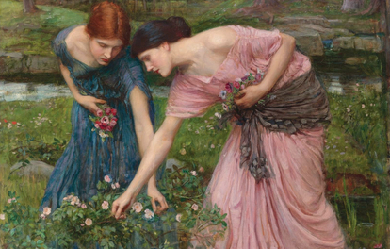
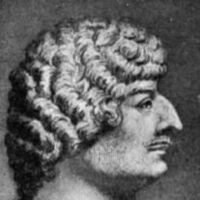
Robert Herrick (baptized 24 August 1591 – buried 15 October 1674) was a 17th-century English poet. Born in Cheapside, London, he was the seventh child and fourth son of Julia Stone and Nicholas Herrick, a prosperous goldsmith. His father died in a fall from a fourth-floor window in November 1592, when Robert was a year old (whether this was suicide remains unclear). The tradition that Herrick received his education at Westminster is groundless. It is more likely that (like his uncle's children) he attended The Merchant Taylors' School. In 1607 he became apprenticed to his uncle, Sir William Herrick, who was a goldsmith and jeweler to the king. The apprenticeship ended after only six years when Herrick, at age twenty-two, matriculated at St John's College, Cambridge. He graduated in 1617. Robert Herrick became a member of the Sons of Ben, a group centered upon an admiration for the works of Ben Jonson. Herrick wrote at least five poems to Jonson. Herrick took holy orders in 1623, and in 1629 he became vicar of Dean Prior in Devonshire. In 1647, in the wake of the English Civil War, Herrick was ejected from his vicarage for refusing the Solemn League and Covenant. He then returned to London, living in Westminster and depending on the charity of his friends and family. He spent some time preparing his lyric poems for publication, and had them printed in 1648 under the title Hesperides; or the Works both Human and Divine of Robert Herrick, with a dedication to the Prince of Wales. When King Charles II was restored to the throne in 1660, Herrick petitioned for his own restoration to his living. Perhaps King Charles felt kindly towards this genial man, who had written verses celebrating the births of both Charles II and his brother James before the Civil War. Herrick became the vicar of Dean Prior again in the summer of 1662 and lived there until his death in October 1674, at the ripe age of 83. His date of death is not known, but he was buried on 15 October. Herrick was a bachelor all his life, and many of the women he names in his poems are thought to be fictional. Poetic style and stature Herrick wrote over 2,500 poems, about half of which appear in his major work, Hesperides. Hesperides also includes the much shorter Noble Numbers, his first book, of spiritual works, first published in 1647. He is well-known for his style and, in his earlier works, frequent references to lovemaking and the female body. His later poetry was more of a spiritual and philosophical nature. Among his most famous short poetical sayings are the unique monometers, such as "Thus I / Pass by / And die,/ As one / Unknown / And gone." Herrick sets out his subject-matter in the poem he printed at the beginning of his collection, The Argument of his Book. He dealt with English country life and its seasons, village customs, complimentary poems to various ladies and his friends, themes taken from classical writings and a solid bedrock of Christian faith, not intellectualized but underpinning the rest. Herrick never married, and none of his love-poems seem to connect directly with any one beloved woman. He loved the richness of sensuality and the variety of life, and this is shown vividly in such poems as Cherry-ripe, Delight in Disorder and Upon Julia’s Clothes. The over-riding message of Herrick’s work is that life is short, the world is beautiful, love is splendid, and we must use the short time we have to make the most of it. This message can be seen clearly in To the Virgins, to make much of Time, To Daffodils, To Blossoms and Corinna going a-Maying, where the warmth and exuberance of what seems to have been a kindly and jovial personality comes over strongly. The opening stanza in one of his more famous poems, "To the Virgins, to Make Much of Time", is as follows: Gather ye rosebuds while ye may, Old Time is still a-flying; And this same flower that smiles today, Tomorrow will be dying. This poem is an example of the carpe diem genre; the popularity of Herrick's poems of this kind helped revive the genre. His poems were not widely popular at the time they were published. His style was strongly influenced by Ben Jonson, by the classical Roman writers, and by the poems of the late Elizabethan era. This must have seemed quite old-fashioned to an audience whose tastes were tuned to the complexities of the metaphysical poets such as John Donne and Andrew Marvell. His works were rediscovered in the early nineteenth century, and have been regularly printed ever since. The Victorian poet Swinburne described Herrick as the greatest song writer...ever born of English race. It is certainly true that despite his use of classical allusions and names, his poems are easier for modern readers to understand than those of many of his contemporaries. Robert Herrick is a major character in Rose Macaulay's 1932 historical novel, They Were Defeated. References Wikipedia - http://en.wikipedia.org/wiki/Robert_Herrick_(poet)
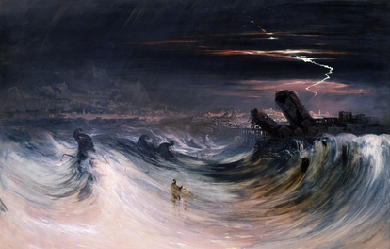
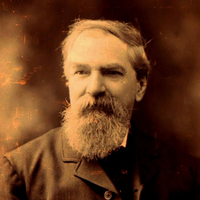
Joseph Skipsey (1832– 1903) was a Northumberland born poet and songwriter in the middle and late 19th century. His best known work is arguably “The Hartley Calamity” about the Hartley Colliery Disaster, a devastating mining accident in Hartley, Northumberland, England in 1862 in which 204 lives were lost. He was known as “The Pitman Poet”.
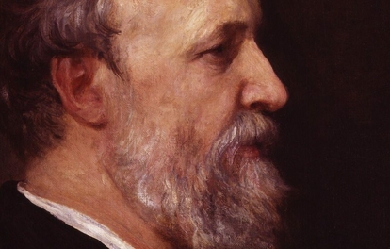
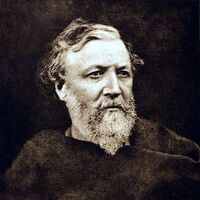
Robert Browning was born on May 7, 1812, in Camberwell, England. His mother was an accomplished pianist and a devout evangelical Christian. His father, who worked as a bank clerk, was also an artist, scholar, antiquarian, and collector of books and pictures. His rare book collection of more than 6,000 volumes included works in Greek, Hebrew, Latin, French, Italian, and Spanish. Much of Browning's education came from his well-read father. It is believed that he was already proficient at reading and writing by the age of five. A bright and anxious student, Browning learned Latin, Greek, and French by the time he was fourteen. From fourteen to sixteen he was educated at home, attended to by various tutors in music, drawing, dancing, and horsemanship.
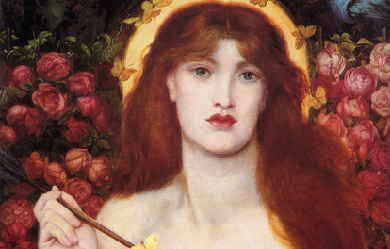
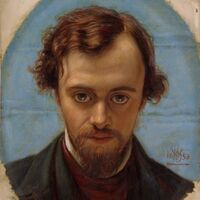
Dante Gabriel Rossetti (12 May 1828 – 9 April 1882) was an English poet, illustrator, painter and translator. He founded the Pre-Raphaelite Brotherhood in 1848 with William Holman Hunt and John Everett Millais, and was later to be the main inspiration for a second generation of artists and writers influenced by the movement, most notably William Morris and Edward Burne-Jones. His work also influenced the European Symbolists and was a major precursor of the Aesthetic movement.
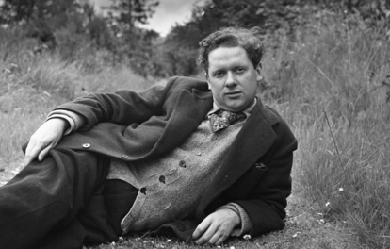

Dylan Marlais Thomas (27 October 1914 – 9 November 1953) was a Welsh poet and writer who wrote exclusively in English. In addition to poetry, he wrote short stories and scripts for film and radio, which he often performed himself. His public readings, particularly in America, won him great acclaim; his sonorous voice with a subtle Welsh lilt became almost as famous as his works. His best-known works include the “play for voices” Under Milk Wood and the celebrated villanelle for his dying father, “Do not go gentle into that good night”. Appreciative critics have also noted the craftsmanship and compression of poems such as “In my Craft or Sullen Art”, and the rhapsodic lyricism in “And death shall have no dominion” and “Fern Hill”.
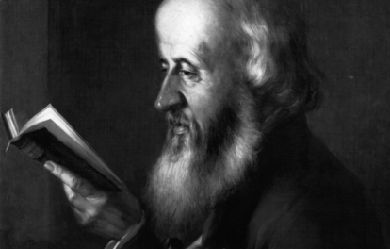
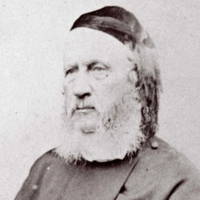
William Barnes (22 February 1801– 7 October 1886) was an English writer, poet, Church of England priest, and philologist. He wrote over 800 poems, some in Dorset dialect, and much other work, including a comprehensive English grammar quoting from more than 70 different languages. Barnes was born at Rushay in the parish of Bagber, Dorset, the son of a farmer. His formal education finished when he was 13 years old. Between 1818 and 1823 he worked in Dorchester, the county town, as a solicitor’s clerk, then moved to Mere in neighbouring Wiltshire and opened a school. During his time here he began writing poetry in the Dorset dialect, as well as studying several languages (Italian, Persian, German and French, in addition to Greek and Latin), playing musical instruments (violin, piano and flute) and practising wood-engraving. He married Julia Miles, the daughter of an exciseman from Dorchester, in 1827, then in 1835 moved back to the county town, where again he ran a school. The school was initially in Durngate Street, then was moved to South Street. A second move to another South Street site made the school a neighbour of an architect’s practice where Thomas Hardy was an apprentice. The architect, John Hicks, was interested in literature and the classics, and when disputes about grammar occurred in the practice, Hardy would visit Barnes next door for an authoritative opinion.

